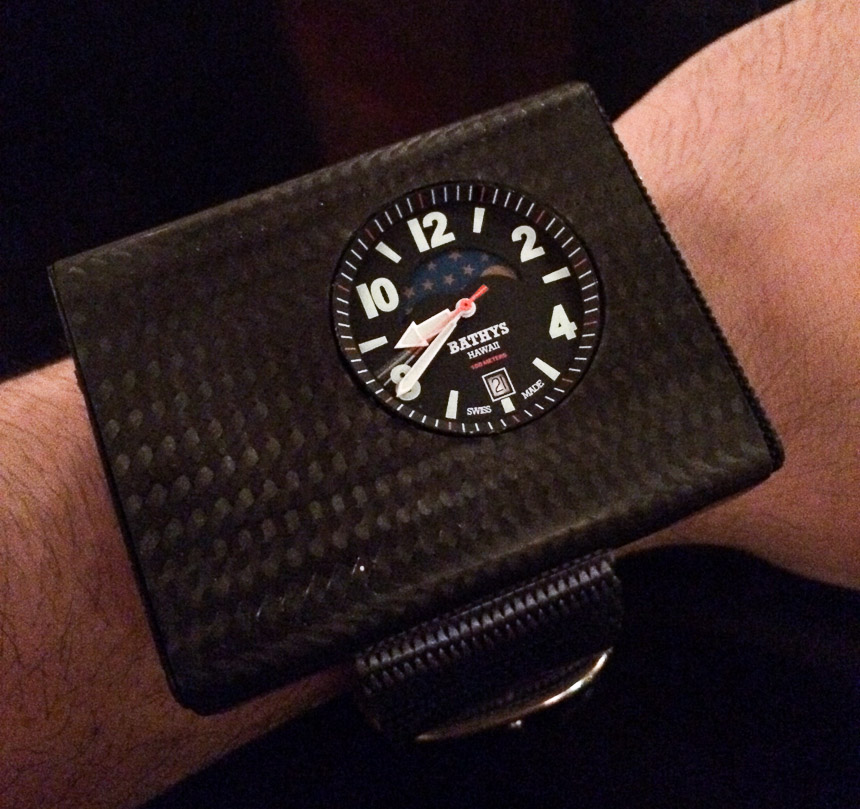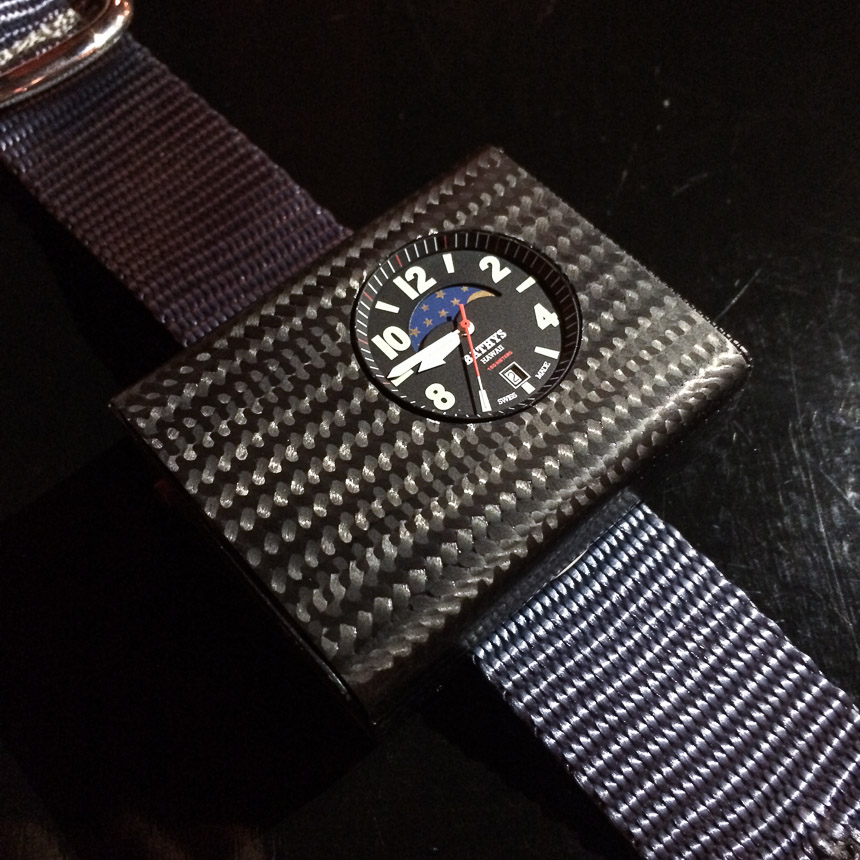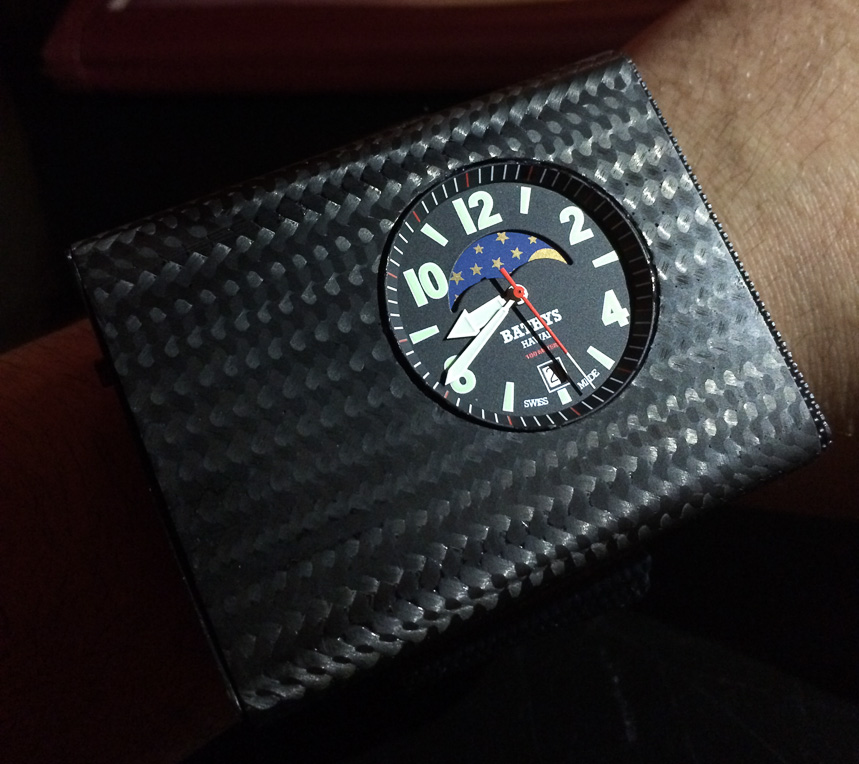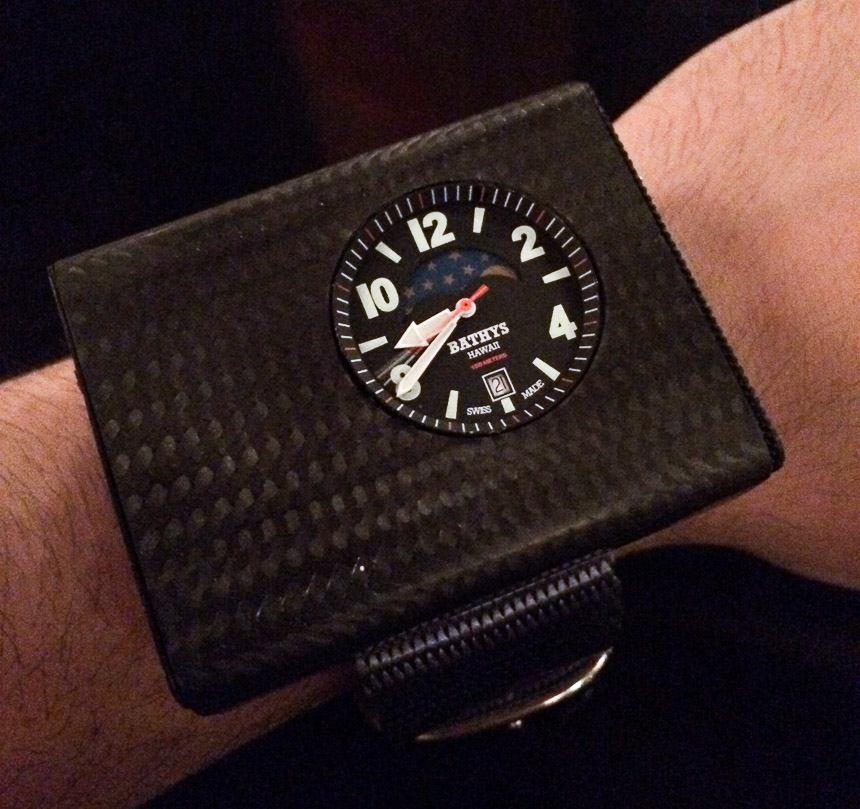
There is probably some unspoken rule which edicts that all pictures taken of electronics before they are commercially released be done so in a dimly lit environment with a phone camera. Following that custom, I found myself snapping a few shots of the Cesium 133 atomic watch by Bathys while dining with the maker of the world’s first atomic wristwatch, John Patterson. This article is about the story, the man, and just what technology has given to the world of watches, while at the same time exploring what watches have given to the world of technology.
aBlogtoWatch debuted the Cesium 133 atomic clock wrist watch here and it was picked up by what seemed like half of the tech net. I am not saying that to boast about the coverage, but rather to once again show an example of how wristwatches are anything but “out.” The tech community clearly has interest in wristwatches, they merely perhaps want more new things akin to today’s technology and possibilities rather than a lot more of the same.
Bathys’ Cesium 133 is in the middle of being perfected for eventual production and it is a work in progress at this point. The concept is down and the watch works – Patterson did all the hard work already. What needs to be done is perfecting a case, finding the right batteries, and actually figuring out what all the functions will be. The Symmetricom chip-scale self-contained atomic clock inside of the watch has a range of possible features that it can display. The only question is what makes the most sense while wearing it on your wrist.

John Patterson doesn’t neatly fit the profile of someone who would go to the effort to make an atomic clock-based wristwatch. While he is technically a scientist, he is equally a recluse and an iconoclast. For the last many years he has lived on the isolated Hawaiian island of Kauai. In the 2000s he began a watch brand called Bathys, which quickly gained popularity offering a slick Hawaiian surfer-style dive watch in a big case. It hit its high-point in 2008 or so until a range of factors sent the brand into relative silence due to everything from the poor economy or Patterson’s own personal life.
For years he didn’t even release a new watch, subsisting on existing stock, and making some poor product decisions like producing a women’s piece. Looking back, Patterson admits that a lady’s watch simply wasn’t the right move for his brand. The investment in the new product didn’t pay off, and Patterson was stuck. aBlogtoWatch didn’t hear from him for perhaps a couple of years. Bathys had so much potential in its heyday because John truly offered the watch world what it loved, a piece designed by a guy with good taste… to satisfy that guy’s own tastes. There is no better formula for making a watch.
Patterson is a persistent tinkerer and one of his strong points is learning from his mistakes while at the same time always planning for the future. For years he bid his time mending what ailed the brand until it was ready to make a sort of comeback… and that time is perhaps quite soon. That is if the Cesium 133 project takes off. I am hesitant to say “goes as planned” because that would imply that there is one. Patterson’s real goal seems to have been a completed proof of concept that an atomic clock-based wristwatch could be done. That whole “commercialization” part was a sort of an ugly afterthought.

How the atomic clock watch idea came into his frame of thinking isn’t entirely clear, but it started with his discovery of the Symmetricom SA.45s CSAC (chip scale atomic clock). Originally released in 2011, the SA.45s was the worlds first fully contained atomic clock assembly small enough to be put on a computer board (thus, computer “chip scale”). According to Patterson, his first conversation with Symmetricom was awkward. Apparently they never though their chip would be used in a wristwatch, let alone any consumer product for that matter.
Despite the fact that SA.45s chips are available to the public, Symmetricom thought it would only be hobbyists that would want one along with the additional developer’s kit, and very few others. In fact, the company seems to be aimed at selling the chips mainly toward military and complex industrial applications (one example Patterson’s gave me was for use in an underwater seismograph). What that translated into was a less than a simple solution for hooking up a watch dial to it.
According to Patterson, the most difficult element of producing the Cesium 133 watch was having the Symmetricom chip interface with the Swiss Ronda movement. Bathys actually removed the quartz oscillator and had to wire up some special circuits to ensure the board would even connect. While it looks like a standard quartz watch dial, the face (borrowed from another Bathys watch) directly displays the atomic time versus quartz movement time that is sometimes updated by the atomic clock. The second biggest issue was (is) battery life.

